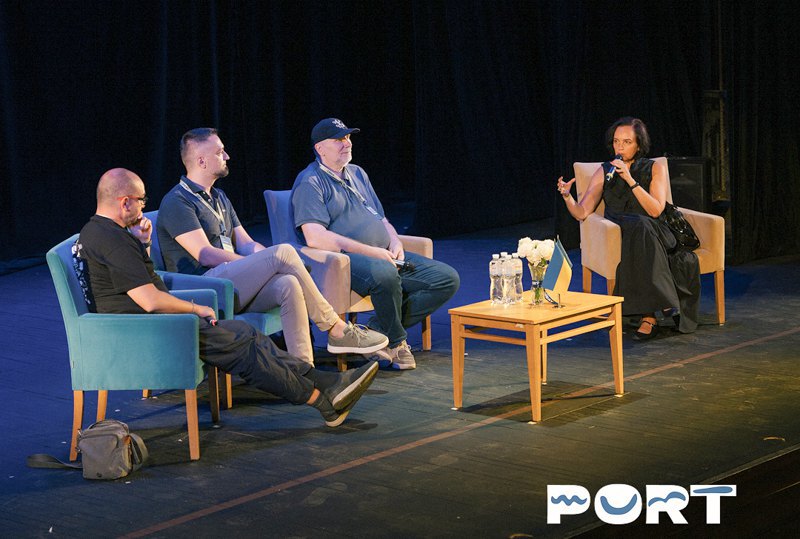
‘When we say “Odesa — the South”, we often mean the south of the empire.’
Oksana Dovhopolova: It is important that the Odesa literary festival PORT does not focus solely on the city, but also raises the topic of the Ukrainian south. Right now, especially after 2022, the theme of a closed city, a city-state within a state, is already becoming a thing of the past. Our speakers have very different experiences, and I would like to talk about how we are rebooting our vision of both Odesa and the entire Ukrainian South.
It is also worth looking at this territory not only as the south, but also as the north. If you look at Odesa and the Northern Black Sea region from the Mediterranean Sea, they are the north. This is how cultures and civilisations have met throughout history: some went north, found others here, and communication began. So perhaps it is worth looking at Odesa from this angle. Let's try to redefine it: when we say ‘Odesa — the South,’ we often mean the south of the empire — Russian or Soviet. Today, however, we have a chance to look at it differently — through several lenses that open up a new vision.
Volodymyr [Sheyko], you have extensive experience in cultural diplomacy and working with other countries. Can we tell the world about the Ukrainian South in a way that will be heard and understood? And does it have any special advantages — additional arguments that allow us to convey our values to the outside world through the Ukrainian South?
Volodymyr Sheyko: I think the starting point for my answer will be an attempt to define what the Ukrainian south means to the world today.
Of course, the world has very different perceptions of Odesa and the Ukrainian south. And this is a sad situation for us, because these perceptions are far from how we would like them to be. But on the other hand, it is a huge field of opportunities: to fill this geopolitical and cultural space with new meanings. After all, Ukraine has every chance to take advantage of the fact that knowledge and perceptions of our south remain limited and stereotypical, and replace them with those that seem more productive to us today and can help position Ukraine on the cultural map of the world.
For the average foreigner, Odesa is the centre of the Ukrainian south. Few place names are as recognisable and evoke as many associations as Odesa. At the same time, in Western Europe and North America, this space continues to exist within the imperial-Soviet myth brought about by several waves of emigration from Odesa and the South, as well as cultural and political ties from the imperial era. This is a major obstacle to our work: we constantly have to overcome stereotypical perceptions of Odesa and the South, as well as the response they evoke in foreigners.
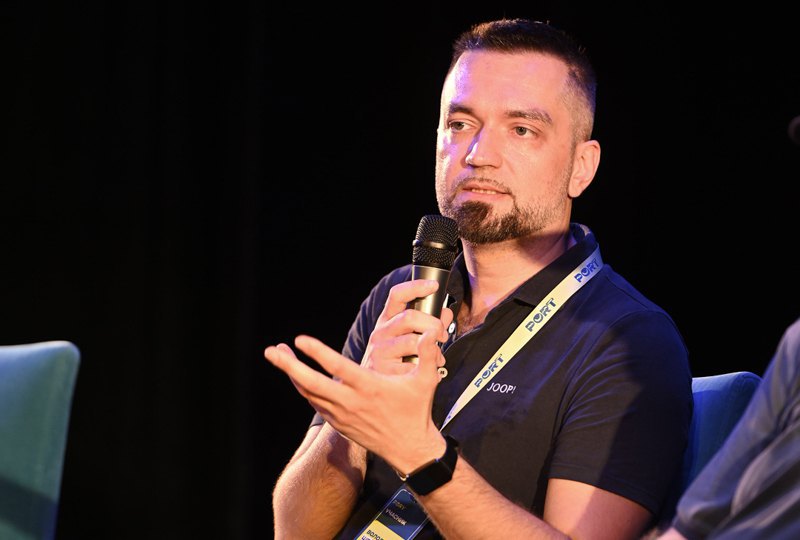
I remember an interesting case with the French festival Un week-end à l’Est — every year it focuses on a different Eastern European city, and a few years ago it was dedicated to Odesa. At that time, we worked with the festival team, helping to put together the programme and choose the right perspective. And we saw a very French view of Odesa — completely detached from the Ukrainian dimension of the Odesa myth, without taking into account the city's modernity, its attempts to rethink itself and find new footholds. This vision was based on lines of identity associated with emigration to North America, primarily Jewish. And we realised how difficult it was to influence this image.
It was 2022, the first months of a full-scale invasion. We tried to explain today's Odesa — the one that is important and productive to show to the world. But it was extremely difficult to explain. We came up against a wall of incomprehension: the French had done a lot in their own way, implementing programme decisions that had been laid down even before our participation. Our perspective was largely ignored because everything we offered was completely new and unfamiliar to them, and therefore aroused mistrust. I even got the impression that they thought we were trying to deceive them, to rewrite the history they knew in a way that seemed anti-historical, biased or politically coloured. And, again, these were the first months of the invasion. At that time, it seems to me, they simply did not trust what we were proposing.
It was, first of all, an imperialistic view, and secondly, a very condescending one. As if to say, we know better how to talk about Odesa. We even had a month-long ‘battle’ over whether to write the name Odesa with one ‘s’ or two on the posters for that festival. That's how far it went.
And this is not an isolated case. Similar situations recur with varying intensity in many of our projects when it comes to the South or Odesa. We constantly encounter the same mistrust. Mistrust that can be explained by a lack of knowledge — scientific, empirical, cultural — about this region, which could form the basis for a new perspective. And since this foundation is lacking, all these discussions hang in the air. In my opinion, this is the main difficulty in talking about the region with the world.
Finally, I would like to say what I think this conversation should be based on. This is what Timothy Snyder does when he talks about the continuity of civilisations in these lands, about the clash of different peoples and cultures that filled this space with meaning and ultimately created something new. Snyder says that Ukraine, with its past, has always been at the centre of pan-European historical and cultural processes. And for many, this is not at all obvious. Therefore, it is productive to speak exactly as Oksana just said: to look at the region as the north of the Mediterranean or the north of the Black Sea — from this perspective.
We are talking about the clash of democracies and aristocracies that existed in these lands and ultimately gave rise to the modern Ukrainian project. And it seems to me that this continuity, which Snyder talks about, is extremely important in the conversation about the South. This is perhaps one of the starting points that can be relied upon in arguments and that will help to prove to the world a different perspective — one that is different from what it is used to.
“French historians shaped the image of the Mediterranean as the inland sea of antiquity. But in reality, the Black Sea was the most ‘inland’ of all.”
Oksana Dovhopolova: And, of course, it is important to emphasise one more point here: people are often ready to see antiquity, and then — the Russian Empire. That is, there is such a ‘certified’ civilisation, and everything in between seems to fall out of history. And this is exactly what needs to be emphasised.
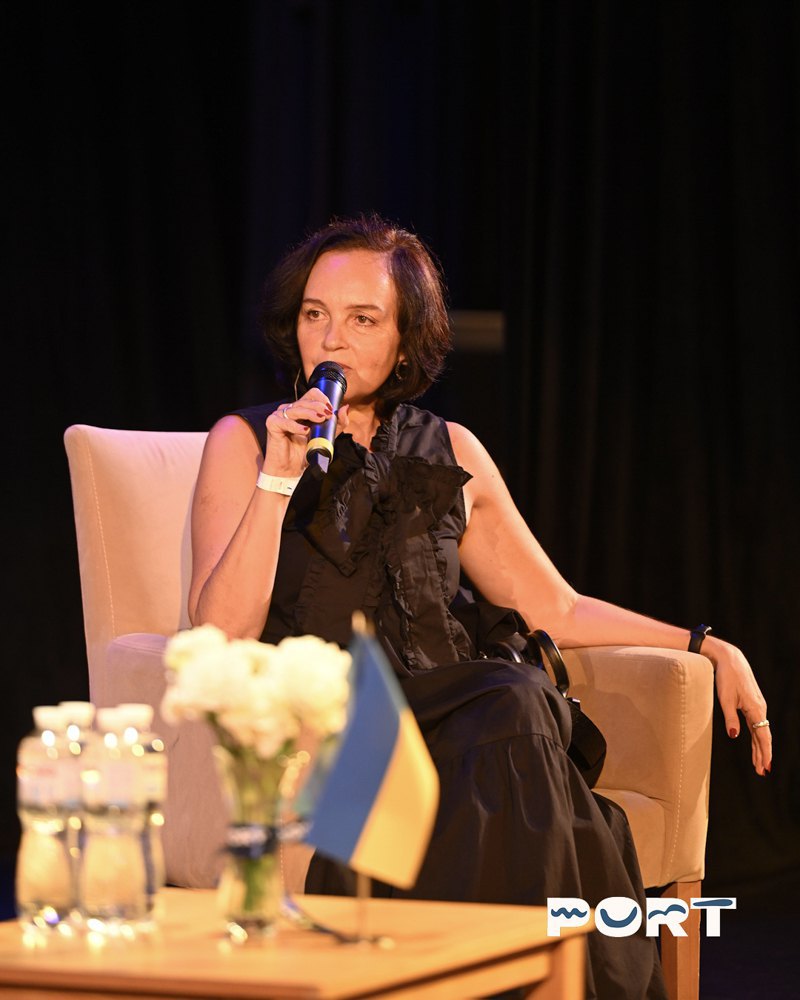
Last year, our team, Past/Future/Art, created the Ukrainian national pavilion at the Malta Biennale of Contemporary Art. We were working within this context: it was a project about Odesa with a distinct decolonisation focus. Malta has a complex colonial history, just like us. And artist Alevtina Kakhidze, who knows how to ask questions with extraordinary precision, found many points of contact with the Maltese. Do you know who heads the Ukrainian community in Malta? A woman from Odesa. And that is also very telling, because it says a lot about who the people of Odesa are.
Volodymyr [Yermolenko], please add something about the colonial discourse in literature, which often prevents Odesa from being perceived from the outside.
Volodymyr Yermolenko: The North-South axis and awareness of its significance for Ukraine were characteristic of many Ukrainian intellectuals. I am particularly interested in the figure of Yuriy Lypa, a thinker and geopolitician closely associated with Odesa. The same can be said about Yevhen Malanyuk. Both thinkers trace the idea of a loss of balance between North and South in Ukrainian history. For example, Malanyuk expresses the idea of the simultaneous decline of ‘Viking iron’ — his iron metaphor — and ‘Byzantine copper,’ which led to the collapse of the supporting axes and the transformation into a kind of looseness. This feeling of loss, in my opinion, is constantly present in the Ukrainian experience.
We often travel to the south — to Mykolayiv, Kherson, and a little less often to Odesa (Volodymyr Yermolenko and his wife, literary scholar Tetyana Oharkova, have made more than 50 trips to de-occupied and frontline territories since 2022: they drove cars for the military, brought books to civilians, and reported for European media. — Ed.). And every time you travel from north to south, you literally feel this geography. For example, our favourite route is from Kropyvnytskyy to Mykolayiv: you drive along and gradually the boundless steppe unfolds before you.
This theme also appears in Hrushevskyy's work. He wrote about both the sea and the steppe, emphasising that the deep history of Ukraine is not only the Cossack era, but a much broader horizon: from the Grand Duchy of Lithuania and Rus to the Scythians, and perhaps even to the Trypillians. This whole history is about the constant struggle to gain a foothold in the steppe in order to open up a path to the sea. After all, it was the sea that provided access to the wider world.
Here, I suddenly came across an interesting concept of the Trojan War in Lypa. I don't know how reliable it is, but according to his version, Troy controlled the route between the Black Sea and the Mediterranean. And so, the grain flows that Herodotus wrote about — that the Greeks were fed by bread from the Northern Black Sea region — are also part of that same history. And it stretches back centuries.
As a philosopher, I am particularly interested in one telling coincidence: Olbia, a city near modern-day Mykolayiv, emerged in the 7th century BC — at the very time when philosophy was born. This is no coincidence, as both phenomena are connected with Miletus. It was there, in the Aegean centre of Greek culture, that the colonisation movements that brought the Greeks to the shores of the Northern Black Sea region took shape, as did the first examples of abstract thinking, initiated by Thales and other Miletus thinkers.
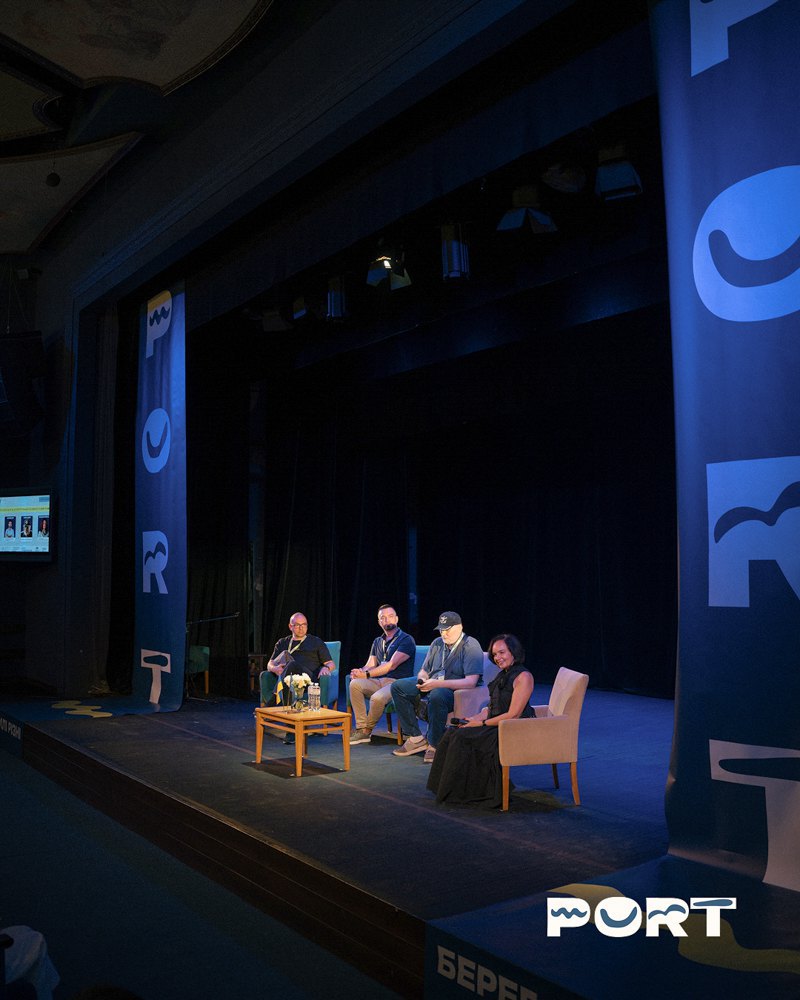
This parallelism is fascinating: the emergence of cities — Tyra, Olbia and others — and, at the same time, the birth of conceptual thinking, i.e. philosophy itself. At that time, Miletus was the centre of the Greek world, and ideas and people flowed from it.
It is interesting to compare this with France, which has already been mentioned here. The first Greek colonies appeared there a century later. One of the first was Agde, a modern town that in ancient times was called Agathe Tyche — the City of Good Fortune. Later, French historians, notably Fernand Braudel, formed the image of the Mediterranean as the inland sea of antiquity. But in fact, the most "inland" sea was the Black Sea: it was its coastline that the Greeks settled most densely. And realising this changes our perspective — and, in my opinion, this is very important.
The south has always been at the centre of Ukrainian intellectuals' reflections. I mentioned Lypa, Malanyuk, and Hrushevskyy, but we can also mention Yuriy Kosach. In his novel, he constructs the entire myth of the ruler of Pontida — the queen of the Black Sea, or the lady of Azov. This is the story of the alleged daughter of Elizabeth of Russia and Oleksiy Rozumovskyy, whom Catherine considered a threat and doomed to death. But the heroine positions herself as the sea queen, the ruler of the Black and Azov Seas.
I try to think of Ukraine as a polycentric community. Each region has its own centre, without which it is impossible to imagine the integrity of the country. Slobozhanshchyna is one of these pillars: it was with this region that the concept of "Ukraine" was first associated. Later, this name spread among the Dnipro region, and later among the Galicians. But it is impossible to think of Ukraine without Zaporizhzhya, without the Black Sea, without Kyiv, without Central Ukraine, without Cherkasy, Chyhyryn and Kholodnyy Yar, without Galicia and Podillya. The geometry of Ukraine is rooted in the geometry of rivers, in the transitions between them — and this is an eloquent image.
But the South is key. Without the South, there is no Ukraine. It is always a metaphor for the struggle to take root in the steppe in order to open the way to the sea. And it is not easy to gain a foothold in the steppe: it is boundless and difficult to subdue. It is this axis — the steppe and the sea — that has once again become decisive for our history. So it is no coincidence that the Ukrainian South is once again at the centre of events.
"Odesa is not a maritime city. Odesa is a city between the sea and the steppe."
Oksana Dovhopolova: We constantly talk about the sea — the Mediterranean, the Black Sea. And it is logical to give the floor to Anton, who works with the theme of the sea in literature and beyond. What does the sea mean to us?
Anton Sanchenko: Year 2022 showed that the world perceives us as the breadbasket of the world. For no other reason would the UN Secretary-General have come to Ukraine. When the grain crisis began and we were unable to send convoys, he came to Kyiv. 2022 also showed how important the south of Odesa Region is. We focused on Odesa, while the four Danube ports handled all the grain traffic coming from Ukraine. And this was clearly visible. I travelled to visit my friends who were border guards — it was impossible to get to Kiliya, Izmail, and Vylkove by bus because there was a continuous stream of grain trucks. And then it became clear how Ukraine really feeds the world and how important Odesa is in this transport artery.
I was working on a news project, writing digests. People often said that our grain was cheap for Africa. But I simply recorded every week where the bulk carriers were going from Odesa. They were going to the Netherlands, Italy, Egypt. In other words, the whole world was solving its grain problems at the expense of Ukrainian grain. And, of course, Africa too, with voyages to Ethiopia and the Middle East.
This year, Hanna Ulyura published a book called 366: A Book for Every Day to Impress as a Cultured Person. It is a kind of reading calendar — 366 reviews of works of world and Ukrainian literature, one book for each day. Interestingly, this literary "year" also includes maritime texts. There are eight of them. This shows how much the Ukrainian cultural community is interested in the theme of the sea: in fact, only one week out of fifty-two.
But there is also good news. Ukrainians spend this week in Odesa. And it is Odesa that can and should become the maritime cultural capital — the capital of maritime studies, the city that will bring the sea back to Ukrainian literature.
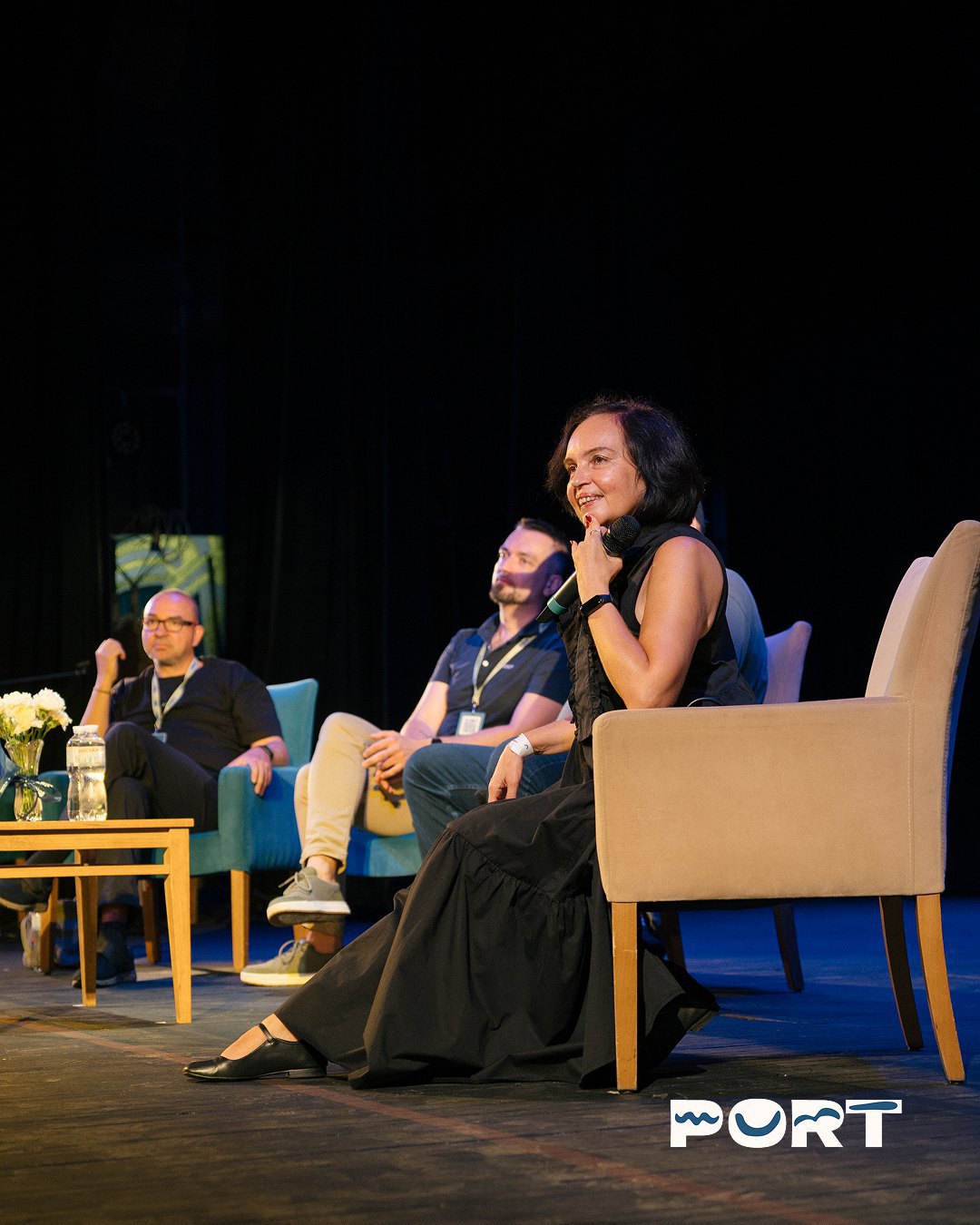
Oksana Dovhopolova: Several years ago, even before the full-scale invasion, Hanna Ulyura researched Odesa's presence in contemporary Ukrainian literature. The image of the city appeared mainly as a summer experience — a journey in search of new impressions, often accompanied by first sexual experiences. In the eyes of the authors, most of whom were not from Odesa, the place had a special aura, a hint of a city of temptation. Unfortunately, there are still few writers who write in Ukrainian from Odesa. But there is a lot of work to be done and room for movement here. And this movement is already noticeable: the festival convincingly proves that today we are witnessing a real boom in Odesa literature.
And again, there is the mention of the port, which fell silent for a while. As someone who was in Odesa in 2022, I can say that for many it was a terrible experience — when the port is silent, when its sounds disappear. The beginning of the full-scale invasion, those few months of silence — one of the most traumatic experiences, along with the hits of the Onyx missiles and everything else.
And it turned out that not only Odesa felt this, but the whole world: when food did not pass through us, the world became hungry, the world was sad without Odesa. And for the people of Odesa, it was an existential experience. Because the work of the port has always been perceived as something as natural as the sunrise. We didn't talk about it, we didn't emphasise it, but it turned out to be extremely important.
Volodya [Yermolenko] mentioned Lypa, and I will mention [Yuriy] Yanovskyy, his Master of the Ship, which contains incredible pages about how the sea is reflected in the steppe, and the steppe is reflected in the sea. And the very fact that Odesa became noticeable in 2022, when the port was silent, shows that Odesa is not a maritime city. Odesa is a city between the sea and the steppe. The fact that we opened up so much and began to feel the region makes us feel the steppe differently.
And here I want to return to Volodymyr [Yermolenko], to the question of your activity, about your travels. Has this feeling of the Ukrainian south during the war changed, transformed? You travel to very different parts of Ukraine. What exactly do you feel is extremely important in the south, something that cannot be lost?
Volodymyr Yermolenko: It seems to me that the south is a feeling of infinity. This is very important to me, because a healthy culture always combines finiteness and infinity. It borders on boundlessness. When I was asked to write two words for this festival, I wrote that it was "Ukrainian boundlessness." Both sea and land. For me, the steppe is, so to speak, the sea on land, or earthly boundlessness.
It seems to me that our enemy, the Russian Federation, is an unhealthy culture because it only has boundlessness. And this feeling is pathological there. When you have a pathological feeling of boundlessness, you stop feeling that what is yours is yours. You begin to feel what is yours as foreign, and what is foreign as yours. And this idea arises that there are no boundaries that cannot be overcome. It starts with thinking: we have boundless metaphysics, and ends with invasions and the physical overcoming of boundaries. Overcoming boundaries without the consent of those who own them is called violence. And, in my opinion, it is this that plays a very cruel joke on our enemy, and we suffer because of it.
This inability to balance infinity with boundaries — it seems to me that it has always been characteristic of Ukraine. I once formulated it as a combination of nomadism, nomadism in a good sense — constant change of places — with, at the same time, deep stability, roots.
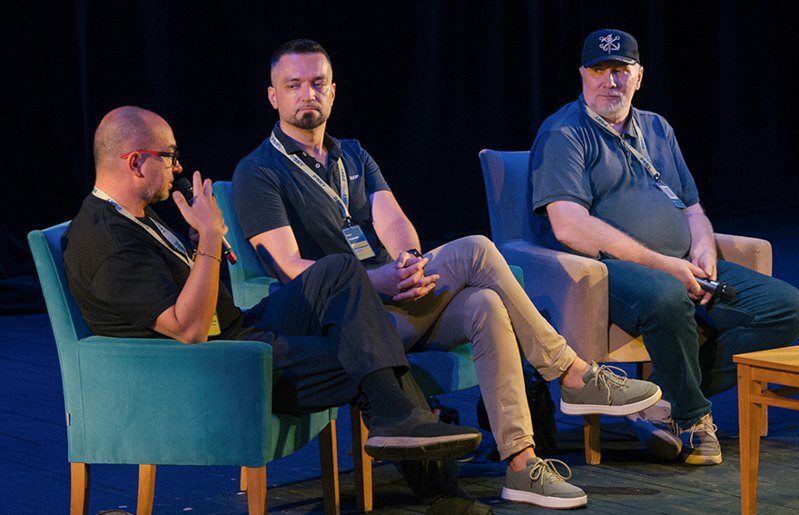
One of the archetypes of Ukrainian culture can be described through the forest and the steppe. The steppe is a feeling of independence from one's roots, a feeling of boundlessness. It is a space for encounters with those who are not here: they appear unexpectedly and disappear just as unexpectedly. The forest, on the other hand, is an environment where you encounter those who have always been here.
Remember Lesya Ukrainka's The Forest Song. There is a moment when Lukash asks Mavka: “Who is your mother, where is your family?” And she replies: “I have always been here.” She cannot have a mother or father because she has always existed; she was not born. In fact, The Forest Song is also, to a certain extent, a drama about the invasion of the human world, which has roots and at the same time does not. It seems to me that this is exactly the feeling in the south: despite the boundlessness around you, you still build and nurture your home.
I remember that in Kherson we visited two museums, a local history museum and an art museum. The art museum has about 15,000 objects, if I am not mistaken, stolen by the Russians. And the local history museum has hundreds of thousands of archaeological exhibits. And there is this feeling when you stand in a room where there should be exhibits from Olbia, and you realise that everything has been stolen. Or in the Scythian halls, which are also empty. And it becomes clear that what the Russians are trying to do is directly related to Odesa. You know this better than I do, but I want to provide a more philosophical framework.
The Russians are trying to prove to us that this steppe, this Ukrainian south, is a rootless land where nothing grows, where there are no roots. And that is why they come and supposedly establish something here from scratch. This is where empire begins, this is where colonialism begins. They plunder the museums of Kherson to show that nothing here belongs to you, that you have nothing in common with the Scythians. And here a paradox arises. We interpret the ancient heritage as one of our roots. But Catherine's model — to rename everything in the Greek manner — is a completely different approach. It is a way of saying: no, we are an empire, we know what classicism is, columns and all that trappings, we will create the appearance of a new Greece to show Voltaire and Diderot that we are supposedly a civilisation. In reality, it is a deprivation of roots and a suppression of memory.
You mentioned Yuriy Yanovskyy. For me, this is also an extremely important text, a very important novel. And not only because of its interaction with space, but also because of its interaction with time. Let's think about it: what kind of novel is this? It is written by a young person, 28 years old, who writes about how she is growing old and recalls what she was like in her youth. In other words, it is a double journey through time.
Culture becomes strong when it begins to write hundreds and thousands of memoirs. French culture, for example, is one big archive: memoirs, memoirs, memoirs. We didn't have that opportunity. Too many young people were executed, destroyed. Yanovskyy himself, in my opinion, was also killed in the 1930s — not physically, but spiritually. He survived that time and died after the war, but internally he was already dead back then. But this dream of a temporal horizon — that you can imagine yourself as an old person reminiscing about your youth — is a great dream that was not always accessible in Ukraine.
Another great novel, very closely connected with the steppe, is Bez gruntu [Without Soil] by [Viktor] Domontovich. The action takes place not in Odesa, but in Katerynoslav, now Dnipro city. But the main idea is that the history of Ukraine unfolds underground. And the figure of the archaeologist Domontovich-Petrov is very telling here: we really do have so much underground.
Look, now scientific publications have begun to reprint photographs of Trypillian megasettlements en masse, and suddenly the whole world is discovering that the first cities, proto-cities, were in Ukraine. This is a peculiarity of our culture: to understand where we came from, we have to go underground. But the Russians say: no, we will cover everything with concrete, build something on top and claim that we were the first ones here.
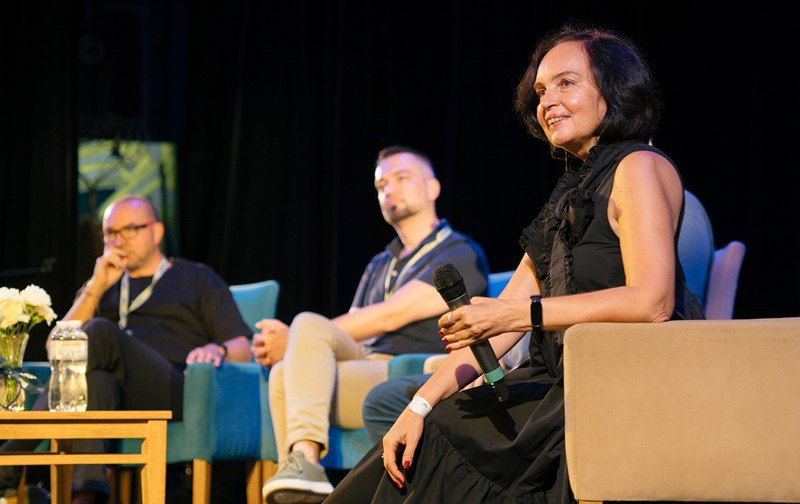
"The Russian version of history erases entire eras — for example, two hundred years of Italian rule in the Black Sea."
Oksana Dovhopolova: This immediately brings to mind, excuse me, Piotrovskiy (director of the Russian Hermitage — Ed.), who said in 2022 that there is no real Europe in Norway. Why? Because there is no antiquity there. But they do have antiquity. Where it comes from — we won't say, but we know.
By the way, you said about time travel that you need to have a gap that you remember. And Ukrainian literature of the 1920s in Odesa is probably the only period in Odesa literature when it was not nostalgic. There are indeed some wonderful texts in the so-called canon of Odesa literature. But most of it is built on a note of nostalgia. It is always present there. And in the 1920s, this nostalgic note is reversed. Odesa began to be treated not as a city that is remembered with longing — as if a hundred years ago it was "wow," but now it is no longer so. No, on the contrary: it was treated as a frivolous, noisy city — sports, industrialism, and not just melancholic seascapes. It is a city where the future lies ahead.
And here Volodya [Yermolenko] touched on an important point: one of the themes of Russian imperial propaganda is to pretend that Russia came and founded civilisation here, and that before that there was nothing. For Ukraine, the steppe is the cradle of civilisation. For Russia, it is a wasteland, a void where there was supposedly nothing. And they came to create an "oasis of civilisation".
And here another topic is important for us — the gap between antiquity and empire. It must be revealed, made visible. Such historical stratification will show each layer of this region's history as important.
Question for Anton — you write and research this: how can we show this history of maritime connections — the one that stretches from antiquity to the empire?
Anton Sanchenko: We can show how we plundered Constantinople. This is also part of our history. And the fact that St. Sophia Cathedral is the central point of Kyiv reminds us that we are the true heirs of Byzantium. It is important to formulate this correctly. Because when people say "Byzantium," they often mean only intrigue. Yes, there was intrigue, but that is only one aspect. In fact, the Byzantine heritage is embodied joy. You only need to enter St. Sophia Cathedral to see that this religion is light and joyful.
The Rus princes were also present in these lands. Not directly in Odesa, but in Bilhorod-Dnistrovskyy, which was part of the Galician principality's sphere of influence. It was a port through which the Galician princes went out into the world. And another important point — the princes on the Danube. It is commonly believed that everything ended with Svyatoslav. But this is not the case. For example, the Romanian city of Galatz is the ancient city of Halych. Prince Berladnik was active here: he fled from Rus and settled on the Danube, gathering around him a community of free people — the Berladniks, who renounced princely power and lived independently. He was such a threat that a congress of the Monomakhs was convened in Chernihiv to decide how to deal with him. In fact, he challenged the Rurik dynasty.
We can talk about the shore of freedom: this is where people fled to avoid dependence on the princes. It should also be remembered that our history is usually shown through the prism of the Rurikids, because the chronicles were written in their favour. Because of this, the Tiverians and Ulichians, who lived in the south and confirm our rights to the Black Sea heritage, are hardly mentioned. In this regard, it is worth writing articles, popularising knowledge, and emphasising that there was no gap in history. We have always been here, maintaining ties with the various peoples who lived on these shores.

The Russian version of history erases entire eras — for example, two hundred years of Italian rule in the Black Sea. And for us, this is important if only because fishermen in Burlachya Balka or Oleksandrivka still sometimes use Italian maritime terms. Linguistic traces of this presence have survived to this day, so the role of the Italians in Black Sea history was significant, although it was later supplanted by the imperial perspective.
A striking example is Feodosia. At one point, it was larger than Constantinople: about 500,000 inhabitants compared to 300,000 in the capital of Byzantium, then Istanbul. This means that we need to restore not only Ukrainian history, but also Italian and Greek history, because the sea has always been an international space.
The Greeks are also part of our identity. One of my great-grandfathers was Greek, and I cannot escape that fact. In Odesa, after all, half of the city was Greek. They left behind memories of their ancestors and Greek Square, and the struggle for Greek independence began right here in Odesa. So when we talk about Istanbul, about the Greek and Italian heritage, all of this needs to be developed and understood in contemporary Ukrainian discourse.
Oksana Dovhopolova: Thank you for that note. But, apart from the Greeks, there were also the Genoese, who coexisted and traded even with the Golden Horde.
Anton Sanchenko: Yes, here we see the Tatar and Nogai motif. It is very clearly felt in Ukrainian tradition. Remember Kozak Golota near Kiliya: he fights the Tatars, and then immediately changes into their clothes. He kills them and takes their weapons and uniforms for himself.
You mentioned archaeology, but I would put it differently: Ukrainian folk songs are a true backup of our history. The archives could be taken to St. Petersburg and kept under lock and key, but the songs remained with the people.
My favourite song is about Samiylo Kishka. He was a rower on a Turkish galley for twenty years, raised a rebellion and brought it to Zaporizhzhya, to the Sich. During this time, he learned all the routes and sea areas. When he escaped to freedom, he led an expedition to Trebizond — and they plundered everything there. Because he knew how to get there. In other words, the motive of plunder is repeated: from the Russian princes to the Zaporozhyan Cossacks. This is also part of our historical character that cannot be ignored.
Oksana Dovhopolova: I want to mention the Odesa journalist Yevheniya Henova. While researching the Ukrainian identity of Odesa, she unexpectedly turned to the topic of the Nogai people. After all, the memory of them is very strong in the South. In one village, I can't remember which one now, the locals still say: "We had a headquarters." "Whose?" "The Khan's." This lives on in everyday life, in collective memory. And perhaps the time has come to revisit this topic and find ways to work with it. Because we often feel awkward: we say that relations were complicated, so it's better not to touch on them. But we need a way to talk about it. That is why I have a question for Volodymyr [Sheyko] as a person who works in cultural diplomacy: can the period of Khanate Ukraine, the period of the Ottoman Empire's presence here, become a resource for dialogue today?
Volodymyr Sheyko: I would first like to return to the question of what the sea is. And then I will bridge the gap to your topic. This is a very interesting conversation, because in it we can find the answer to who ultimately prevailed — the steppe or the sea. It can be said that a certain balance has been established between them. And I agree: Odesa is not entirely a maritime city; it is a city on the border between the steppe and the sea. And this raises the question: which is more prevalent in the south — the steppe or the sea? Statistics on the representation of the sea in Ukrainian literature are also telling. This is my subjective opinion, but I still think that the steppe prevailed over the sea and that there is more steppe in southern Ukraine, because we never became a maritime power.
This was confirmed a few years ago when I spoke with the current commander-in-chief of the Ukrainian Navy. At the time, he was working on a naval doctrine. The document was truly intellectually rich and boiled down to one idea: Ukraine must transform itself from a country by the sea into a maritime power. For me, this was the key to understanding how the military thinks about itself and the south. This is a completely different perspective than the cultural one. But when it comes to literature and art, we really don't have much sea. Its image in culture seems to have been swallowed up by the steppe. The steppe ultimately dominated the sea — in our everyday culture, not only in the material sense, but also in the immaterial sense.
When we talk about this in the context of cultural diplomacy, in the context of what can be productive, what is worth talking about with the world in order to make our new narrative convincing, it is really important to look at it from the perspective implied in the title of this conversation. We are talking about a decolonial perspective, about rediscovering the identity of the Ukrainian South. And it is important to remember that decolonial processes are two-way. On the one hand, it is emancipation and liberation from imperial domination. On the other hand, it is a return to one's own, to oneself, to what was suppressed, destroyed, oppressed, remained invisible or never came into being.
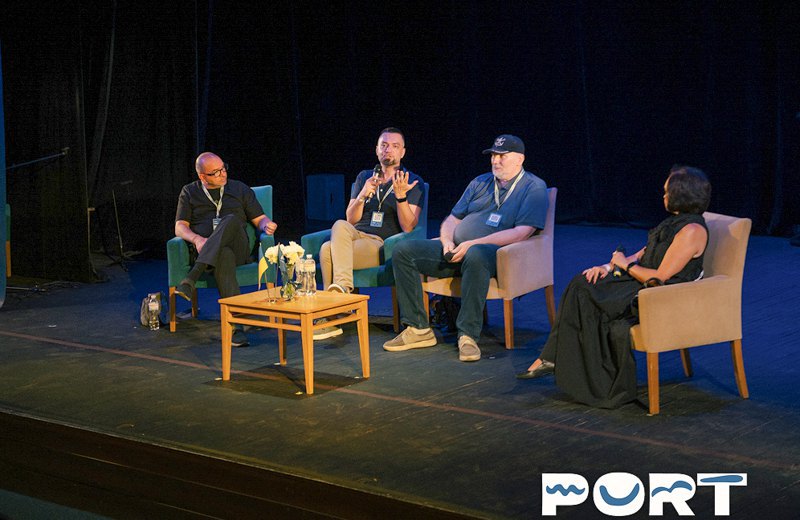
Many states and communities undergoing decolonisation processes have certain imbalances: in some places, one direction dominates, in others, another. For example, if we talk about India as a former British colony, there was much less of a drive to return to their own identity than in our country, because theirs was not as destroyed and suppressed as ours. Conversely, other countries may be more focused on overcoming colonial administrative frameworks or other forms of imperial domination.
That is, these processes are not necessarily synchronous. But in our case, they are absolutely connected. The only thing is that the first process currently prevails over the second: we are getting rid of the imperial legacy, attributes and symbols of the imperial past. But we are not yet working hard enough to reclaim what is ours or to understand what exactly was ours. And this is where the answer to the question lies: what to talk about with the world.
Until we agree on this among ourselves, our external narrative will never be convincing, coherent, and complete. Because we will always speak in fragments of our history, fragments of our identity. And they will never form the complete picture that the imperial narrative about Odesa and southern Ukraine was for the world.
Incidentally, I am not sure that individual historical periods or milestones can become a truly effective tool of cultural diplomacy. Yes, this history is important to us. But do we want to limit ourselves to educating and teaching a thousand years of history to a world that, frankly speaking, is not very interested in it? Every country has its own past — no poorer and no richer than ours. Moreover, it is not always manifested in artefacts. And it is artefacts that become an important element of cultural dialogue: without them, conversation often remains mere words and loses its persuasiveness.
I was recently asked whether Trypillian culture could become a tool for shaping Ukraine's image in the world. Perhaps, but not as a separate, isolated phenomenon. We are trying to explain all our historical stages and vicissitudes to the world, without understanding that no one is interested in listening to such a "history lesson." What is needed here are holistic images that can be conveyed through art and material culture. And we are still a long way from that.
Anton Sanchenko: While the Naval Forces Institute was in Sevastopol, we did not have a Maritime Dictionary. Only after the institute moved to Odesa, 30 years after independence, did the first Maritime Dictionary appear, edited by Rector Maksym Viktorovych Kiriakidi.
For me, this is an indescribable step forward, which shows that development is continuing. It is Odesa that should gather around itself a powerful community of people who are interested in maritime studies and who write maritime texts. After all, the situation was strange: I wrote books, but 40% of the text remained incomprehensible to translators — there was nowhere to check the meaning of terms, and it seemed that I was inventing words. Now there is a dictionary.
In the last few years, a group of maritime authors has emerged — small for now, but it exists. And I hope that readers of Ukrainian maritime literature will grow here, in Odesa, and not only in Kyiv. This is important and inspiring. Perhaps maritime literature is the future.
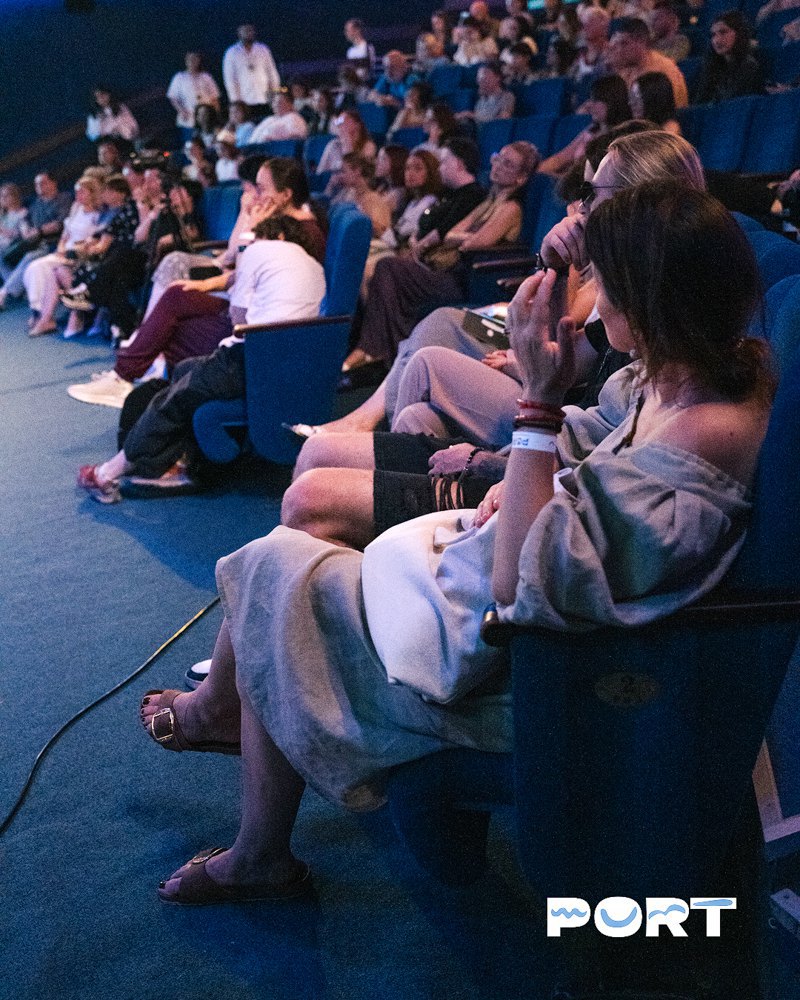
"We constantly repeat the thesis about a multicultural South, but there are few real signs of this in the public sphere."
Question from the audience [from writer Kateryna Kalytko]: I was among those who wrote their motto for the festival, and I took the liberty of formulating it as follows: our South is the new Ukrainian Piedmont. I am sincerely moved and inspired by how the South, Odesa and the Odesa Region are now reinventing the language of self-description, reinventing their own local myth. But at the same time, we always talk about the national myth — the grand narrative that we will carry into the world. This was also mentioned today. So I would like to ask you to reflect with me: can this southern vitality, this impulse of reinvention, become a starting point for the renewal of the global Ukrainian national myth? And do we mutually feel this impulse, this readiness for interaction?
Volodymyr Yermolenko: The 19th century Italy is indeed very important to us. We underestimate how the Italian national movement — I am referring to figures such as Mazzini, Gioberti and others — influenced Eastern Europe: the Czechs, Slovaks and Poles. These ideas reached us too, and they took root here.
The Piedmontese idea is important not only because it marks the birth and rebirth of a nation striving for unification. Equally important is the world these figures imagined. In Mazzini, in the Italian context of the 19th century, it is not only about Young Italy — he creates the organisation Young Europe. It is here that the history begins, which can be considered a precursor to the idea of the European Union. Even then, the idea was voiced that Europe should become a "republic of republics".
This is particularly close to our hearts. When Dragomanov arrives, he talks about precisely this: the state should be built from the bottom up, from the community, rather than from the top down. The state as a community of communities, and international association as a community of communities on a larger scale. The key element in this approach is egalitarianism — equality and respect for each other's dignity.
Why are the Trypillians important for the global discussion? In the book The Dawn of Everything. A New History of Humanity, anthropologist-anarchist David Graeber (who recently passed away) and British archaeologist David Wengrow write about the Trypillian megasettlements as an example of how people can live in large communities without a clear hierarchy. This contradicts the school of thought imposed on us by Marxism: that small groups of hunter-gatherers existed first, and then with the advent of agriculture, surpluses, hierarchies, religions, etc. inevitably arose. But it turns out that a community could have 10,000 people without a hierarchy. We don't know if this is true; perhaps it's just a fantasy. But the idea itself is important for the global discussion: are large communities capable of existing without strict authority?
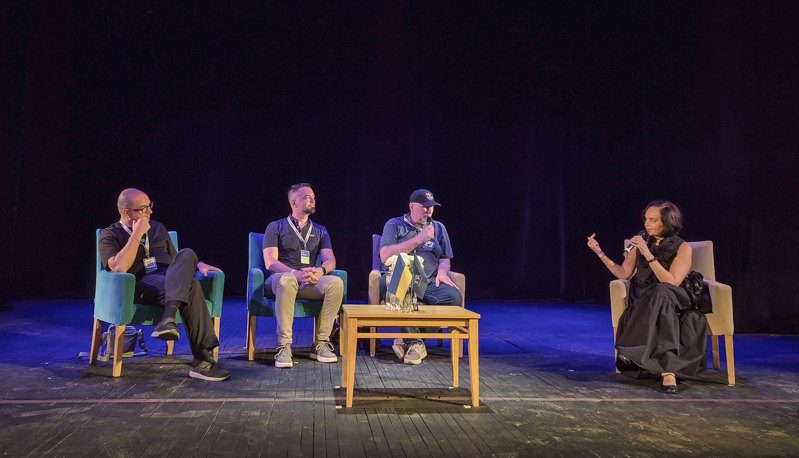
Returning to the South and Odesa, all this is particularly noticeable due to the region's multinationality and multiculturalism. But, in my opinion, this multiculturalism must be freed from the Russian colonial myth. After all, it is often explained by the language factor: they say that the Russian language united everyone. Instead, it is worth reviving various cultural elements: Greek, Tatar, Crimean Tatar, Bulgarian, Genoese, Jewish, and so on. This is the path to true multiculturalism.
Why did we stop at the steppe and not reach the sea? Because our identity, which was created by Ukrainians and to which we owe a lot, was largely Slavophile — Slavocentric, as in the Cyril and Methodius Society. It shaped us, but at the same time limited us. Because in Soviet and post-Soviet textbooks, we were taught a simple scheme: Ukrainians lived peacefully, until the Tatar invasions destroyed everything and robbed everything. That is how we opposed ourselves to Crimean Tatar history.
I once showed Alim Aliyev (Volodymyr Sheyko's deputy, a Crimean Tatar — Ed.) an 18th-century engraving. He said, "Who is this? He looks like a Ukrainian hetman." But in fact, he was a Crimean Tatar khan. That's how intertwined everything is.
That is why the key lies here — in the south. Here, we need to rethink Ukrainian identity as a political nation, as a solar system that absorbs many other ethnic and religious identities. Without Odesa, without the south, this cannot be done.
Volodymyr Sheyko: I agree with the importance of this multiculturalism, but in my opinion, we still practise it too little and make it too invisible. We constantly repeat the thesis about the multicultural South, multicultural Odesa as a result of the influence of the sea. But there are few real signs of this in the public sphere, in public discourse and in practices that would not only proclaim it but also demonstrate it. And they often boil down to folkloric, entertaining or everyday stories, which diminish the true value and significance of this multiculturalism.
As for a unifying idea that can project itself outward, it seems to me that Europe is such an idea for Ukraine right now. We already clearly understand that we are an integral part of the European space — geopolitically and culturally. We know where our enemies are, where our allies are. We see ourselves as participants in the European security architecture, integration, and the future European project.
And this is an important unifying idea around which the regions of Ukraine can find themselves. The Ukrainian south and Slobozhanshchyna are the cornerstones of this project. After all, they are the most important "suppliers of European security" among all Ukrainian regions. Therefore, this space is extremely important: without it, the pan-European vision that Ukraine believes in today and is moving towards will not happen.
***
Oksana Dovhopolova is the curator of the memory culture platform "Past / Future / Art", a professor at the Kyiv School of Economics, and a Doctor of Philosophy.
Volodymyr Yermolenko is a Ukrainian philosopher, essayist, translator, Doctor of Political Studies, Candidate of Philosophy, senior lecturer at the Department of Philosophy and the Department of Literary Studies and Foreign Languages at Kyiv-Mohyla Academy, president of Ukrainian PEN, and head of the International Renaissance Foundation.
Volodymyr Sheyko is a specialist in cultural management, cultural diplomacy, marketing and communication, CEO of the Ukrainian Institute, and a member of Ukrainian PEN.
Anton Sanchenko is a Ukrainian writer, translator, publisher, and developer of information retrieval and analytical systems.
***
The Territories of Culture project is published in partnership with the First Private Brewery and is dedicated to researching the history and transformation of Ukrainian cultural identity.








